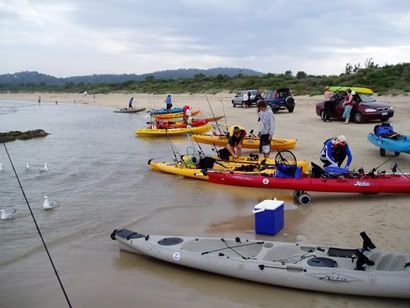
Planning for your next Kayak Fishing Adventure should be a straight forward affair, pick a fishing location, pack your vehicle and then transport towards a great day on the water. For others though, particularly newcomers to the sport, it can be an overwhelming practice. With so many specific kayak fishing products available on the market, that are all designed to boost your actual angling experience, it’s hard to know what to take and when to take it. When you factor in your chosen location, along with any logistics planning required it can become even more puzzling (Meaning somewhere/sometime/somehow there is a risk you could be caught short).
Gearing Up:
To commence the subject of trip preparation we should really start right back at the beginning, back to your first ever trips where ‘Never enough’ seemed to often work best. It always seemed plausible that being over prepared for a day on the water was in your best interest, especially when travelling/traversing large distances just to go fishing. While your car boot may be full not everything tended to grace the kayaks deck, pockets or hatch; some unused items remained back on dry land. Back then we were inclined to pack everything/anything for even the most basic of outings, as the thought of forgetting some sort of key item (Like a paddle or landing net) was too much to bear.
Usually left at home beyond your fleeting sight, it’s a frustrating experience forgetting gear and happens to the best of us a couple of times. Fortunately after the pain subsides it only seems to flare up once or twice more (You can learn your lesson). But is there a cost of being over prepared, both on the water and off? How much room is left in the car to pack clothes, family and other personal items? No matter what previous logistics experience you have under your belt, this little gear refinement lecture can go a long way.
I have touched on these types of gear ponderings before in earlier editions of Yak Fisher magazine, quite often thinking aloud about my logic versus your logistics. As an example when I load my Hobie Outfitter for even a simple trip my car boot cops twice as much gear as a single kayaks makeup occupies (Mirage driven or not). Even a neat solution like a lid able storage box (Containing its two seats, yak accessories, lifejackets etc) still takes up a lot of space, even in a stackable configuration.
This problem unfortunately (As with most tandems) doesn’t really dissipate if the trips short and sweet or long and lasting. To help initially combat lugging excess, unnecessary kit around I made a gear check list to memorise the essential kayak fishing items required for a day trip, including the basics and some expanded requisites. After a few trips, tailoring equipment on the fly, the list itself becomes second nature and is eventually discarded (Now nothing is ever forgotten, touch polyethylene). However, the list itself forever looms large, especially when venturing hundreds of kilometres (Beyond the ubiquitous point of no return) to fish a new area for the first time.
There are many ways you can train your brain when it comes to packing your gear, the easiest way to learn from a past forgotten mistake is to pop your boot and pack the most important items first (Developing a mental list). This can of course differ from person to person but in my case my paddle, Mirage drive, PFD and kayak seat are packed first (And foremost), followed by the more bulkier gear right down to smaller singular items. At least this way, even if I forget my fishing rods or other important tackle I can still enjoy a safe day on the water. Some of your favourite fishing destinations don’t really require that much thought when it comes to gear preparation (Minimal clothes and sun wise kit), the other end of the prep spectrum is quite the opposite (Maximum gear, maximum comfort).
If you’re planning a short trip to your local estuary for a mid morning session it will be a far simpler affair than venturing a few hundred metres offshore for a pitch black predawn raid. Even if you treat each trip as even on its own merit its simple thought observations like these that will help you prepare your gear for the days, weeks, months and years ahead.
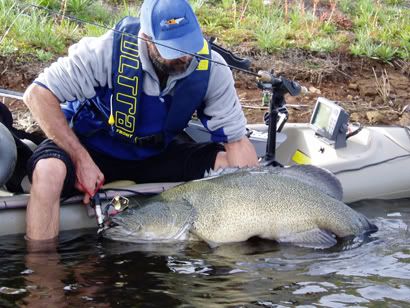
Equipment rudiments:
When your thinking about creating your own tailored paper or mental check list the easiest method of quelling madness can be breaking down items into numerous headings (Example - ‘Comfort’ and ‘Necessary’). Tools in the vein of braid scissors, pliers and lip grips are like ‘Comfort’ items and make rigging gear and handling fish so much easier. Items such as a paddle, kayak seat, landing net, a fishing rod and a PFD (Personal flotation device) are like ‘Necessary’ items and must be included.
You will find when packing for different locations that your basic equipment varies little but your own ‘Comfort’ requirements may increase. Items like drogues, anchors, stake out poles, GPS and sounders can often share listings, overlapping preconceived ideas of what ‘Comfort’ and ‘Necessary’ really govern (In various kayak fishing situations).
Now you have crammed the car with all your gear odds and ends how do you house all these items on your kayak, both safely and securely? Basic trips and even advanced fishing competitions don’t really require maximum amounts of lure luggage, sometimes just a hand full of lures and/or terminal tackle will suffice. Some days I take a couple of packets of soft plastics and half a dozen jig heads in various sizes, other times I’m on a strictly ‘Plano with the lot’ diet. Either way, once a bait or lure starts working well on its intended species it is rarely swapped off, rendering the 6 dozen packed lures, taking up your valuable space obsolete.
The humble Milk crate is a widely adorned object that has multiple uses, typically carrying items such as lip grips, pliers, scissors, leader spools, dry bag (Camera, wallet, keys etc). Perfectly suited for calmer styled waters it’s a pack and lift item that can be equipped at home well beforehand and then moved from boot to kayak in one easy, water’s edge step. After forgetting two seemingly miscellaneous but equally important items while attending a Kayak fishing Tournament recently (Not discovered till on water mind you) I turned an unused dry bag into one competitive ‘Necessary’ item, making room in the front hatch and thus saving the kayaks rear deck storage for a live well (Otherwise often taken up by a Milk crate).
By thinking of many items as one it’s packed into my kayaks hull prior to loading and houses everything (sans tackle) I need/require on the tournament day. This bag typically contains two pairs of pliers (One spare), lip grips, two measuring rulers (One spare), rod holders, sounder (Including mount), battery and charger. By pre-equipping myself with this ‘MacGyver bag’ I can concentrate on proper tackle selection customised to suit conditions (That in turn suit me).
There is a little grey area when recommending exactly what safety gear to take out and when, but I always factor in a ‘What if’ scenario, even if it’s just packing an extra lightweight spray jacket. Some people may call me a pessimist but I find my own personal trait quite reassuring. For backup propulsion methods (Example, broken paddle shaft) a breakdown paddle can be stored in the kayaks hull, well out of the way of deck born clutter. The same can be said for a small first aid kit, flares, signalling mirror, LED torch, emergency poncho even sunscreen and insect repellent (And I’m deliberately only just touching on the safety matter).
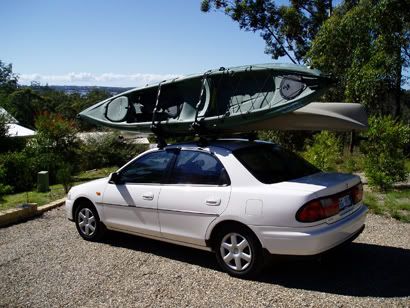
Kayak Clothing:
Clothing is much more of a personal choice; however some protection from the sun and elements should be paramount. Lightweight, breathable clothing can be layered effectively, eliminating bulk weight and freeing up body movement. Items like spray jackets/spray pants keep water ingress at minimal levels, plus when used effectively with body compression gear/thermals help deviate wind penetration. In the event of a capsize, no matter the conditions, lightweight clothing wont hinder your ability to re-enter your craft (But avoid cotton clothing, as like Bear Gryllis says “Once wet, they can chill you to the bone”).
Weather repelling material (Like Goretex) will also outperform wetsuits, both steamer and spring. While wetsuits can be layered effectively if they become damp above the waterline the insulating properties highly regarded during water use can retain moisture rather than wick it (A wind chill hazard worth avoiding). Longevity of movement becomes restricted when using a steamer and while paddling my shoulder and upper arm muscles seem to fatigue faster (A personal observation).
The ongoing debatable topic on whether it is safe to wear PVC style waders is again a personal decision that only you can make. There have been myth busting attempts made in the past using suburban backyard pools and bold declarations of wisdom on various forums, but the simple fact of the matter is a loss of buoyancy can be achieved and survival miscalculation can occur. Given the amount of attributed deaths the boating community has suffered, both in inland lakes and coastal areas of Australia, I would/will never recommend donning waders of any description whilst kayaking.
Closed toed footwear is advisable, like surfing booties or waterproof draining shoes. An unwary step and shallow and rocky underwater obstacles shred skin fast, just as quickly as a barbed treble can embed in flesh. Most surfing boots on the market include a grippy sole (Like Vibram), great for avoiding slippery boat ramps and awkward tip toeing back to the car. Ultimately covered feet, long pants, long shirt, broad brim hat, sunglasses and sunscreen will keep you on the water longer. With the amount of U.V light that can reflect off the water’s surface upward, let alone from above it pays to stay covered from head to toe.
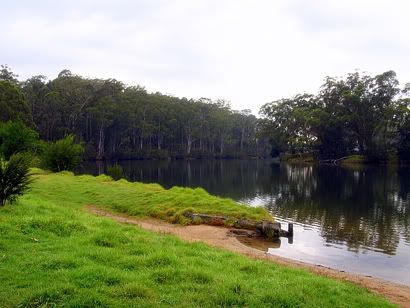
Planning Resources:
Over the Christmas break my partner and I followed a pre prepared holiday plan to visit some new kayak fishing destinations, devised using only the internet. Travelling six and a half hours one way to visit the unknown is exciting, it’s even better when everything during your trip just falls into place. Using the web and Google I topic searched the destination, finding information on accommodation (Ranging for all budgets) and even planned fuel consumption to a tee. Google Maps and Google Earth provided street references, printable maps, amenities and goods and services, tackle shop locations and travel times. Accompanied with the use of our in car GPS system we could even plot areas to launch our kayaks from, taking into account distance to and from our new interstate ‘Base’.
Trip reports from past travellers (Including Fishermen) and notable guides and tourism authors will also be found, earmarking potential kayak fishing hotspots. Another super feature of the internet is the ability to forecast weather using sites like Weatherzone (www.weatherzone.com.au), Ask Huey (www.askhuey.com.au) and the Bureau of Meteorology (www.bom.gov.au). It can help you pack essential wet weather gear (Or other items for varying conditions) and while predicted forecasts can vary they are usually fairly accurate. Great for average mean temperature, tides and swell conditions, moon phases and even barometric pressure.
When traipsing round the countryside with a kayak in tow one should never be afraid to ring ahead and enquire about alternate accommodation. Sometimes that picturesque lakeside camp site/ coastal cabin may be ‘Booked out’ or become unavailable at short notice. During the past I repeatedly struggled to secure decent shelter on the south coast throughout peak holiday periods, often all that remained were hotel rooms which left me and my kayak feeling vulnerable. Main street thorough fairs are no place for a kayak to remain on a roof during a long weekend but some alternatives may be obtainable. One Hotel I found let me take the mighty Outfitter, 14’ of it, into our room; as a result I have been a return customer at this compassionate establishment over and over again.
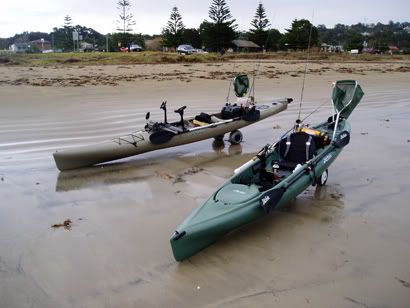
Conclusion:
To end this in perspective a year or two ago I was contacted by a fishing journalist from Canada who had relocated to Australia for a year or two. Looking to get out and into some kayak fishing I suggested accompanying myself and a few friends on a trip to Jindabyne, NSW. Deciding to give the space hogging Outfitter a run in the mountains, and given it was during the freezing depths of winter, our trip preparation was of the utmost importance.
Remembering the consequence of skimping a list one was roughly created whilst at work, heeding all needs of my cautious, first time companion. Spying the updated freezing forecast on the net (Forecast of -7 degrees minimum) on the eve of our trip, it turned out we needed a lot of gear than I had originally anticipated. For all the three kayaks (1 tandem, 2 singles), kayak accessories, fishing tackle, multiple layered winter clothing, food and utensils between us the only single item forgotten between four people was a kettle for a cuppa (We used a pan to boil water). Guess who forgot to bloody pack that?!? (It was on the list, no comment).
A day on the water can be conjured up on a whim without much thought; other more excessive adventures require a huge degree of scheduling. Whichever direction you choose to take the benefit of planning shouldn’t consume you; only get your brain working well ahead of time. Learning to prep for the worst case scenario will not only keep you safer it will help you enjoy kayak fishing from a higher state of well being. As with anything in life nothing should be taken as chuck and chance, that metre plus Flathead of a lifetime wont appreciate you forgetting your pliers and your “Oh well, next time” attitude, nor will you when you realise your digital camera is at home on the kitchen bench too (Right next to that blasted kettle!).



